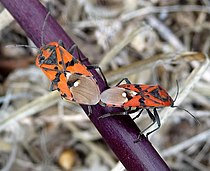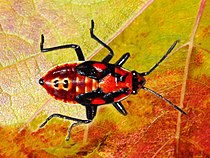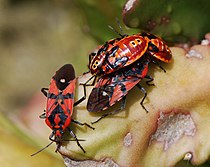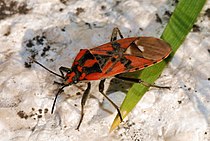
The genus Ophrys is a large group of orchids from the alliance Orchis in the subtribe Orchidinae. They are widespread across much of Europe, North Africa, Caucasus, the Canary Islands, and the Middle East as far east as Turkmenistan.

Giovanni Antonio Scopoli was an Italian physician and naturalist. His biographer Otto Guglia named him the "first anational European" and the "Linnaeus of the Austrian Empire".
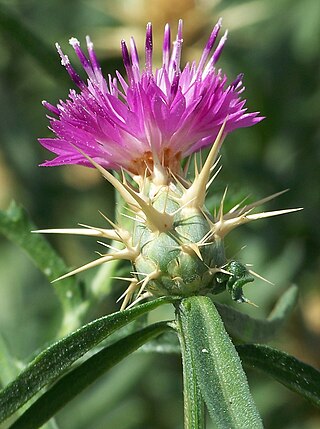
Centaurea calcitrapa is a species of flowering plant known by several common names, including common star thistle, red star-thistle and purple star thistle. It is native to Europe but is known across the globe as an introduced species and often a noxious weed. The species name calcitrapa comes from the word caltrop, a type of weapon covered in sharp spikes.

Zodarion is a genus of ant-eating spiders from the family Zodariidae. 169 species from Eurasia, North Africa and North America have been described as of November 2022.
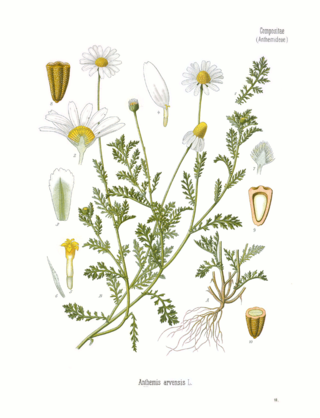
Anthemis arvensis, also known as corn chamomile, mayweed, scentless chamomile, or field chamomile is a species of flowering plant in the genus Anthemis, in the aster family. It is used as an ornamental plant.

Micromeria is a genus of flowering plants in the mint family, Lamiaceae, widespread across Europe, Asia, Africa, and North America, with a center of diversity in the Mediterranean region and the Canary Islands. It is sometimes placed within the genus Satureja. The name is derived from the Greek words μῑκρος (mīkros), meaning "small," and μερίς (meris), meaning "portion," referring to the leaves and flowers. Common names include savory and whitweed.

Harpactea is a genus in the family Dysderidae. Harpactea is a replacement name published by W. S. Bristowe in 1939 for the unavailable name "Harpactes" published by R. Templeton in 1835, which had already been used for a genus of birds. They are non-web building predators that forage on the ground and on tree trunks at night, mainly in xerothermic forests. During the day, they hide in silk retreats they build under rocks or bark.

Chlaenius spoliatus is a species of ground beetle native to the Palearctic, the Near East, and North Africa. In Europe, it is found in Albania, Austria, the Balearic Islands, Bosnia and Herzegovina, Bulgaria, the Canary Islands, Corsica, Crete, Croatia, the Czech Republic, European Turkey, mainland France, mainland Greece, Hungary, mainland Italy, Moldova, North Macedonia, Poland, Romania, central and southern Russia, Sardinia, Sicily, Slovakia, Slovenia, mainland Spain, Ukraine, Yugoslavia.

Diachromus germanus is a species of ground beetle and the only species of the monotypic genus Diachromus.

Sesleria is a genus of perennial plants in the grass family. They are native to Eurasia and North Africa. They are found in Albania, Austria, Baleares, Baltic States, Belarus, Belgium, Bulgaria, Corsica, Czechoslovakia, East Aegean Islands, Finland, France, Germany, Great Britain, Greece, Hungary, Iceland, Iran, Ireland, Italy, Crete, Crimea, Lebanon, Morocco, North Caucasus, Poland, Romania, Sardina, Sicilia, Spain, Sweden, Switzerland, Syria, Transcaucasus, Turkey, Ukraine and Yugoslavia.
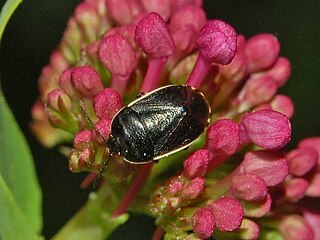
Canthophorus dubius is a species of burrowing bug belonging to the family Cydnidae, subfamily Sehirinae.
Apatema mediopallidum is a moth of the family Autostichidae. It is found on Corsica, Sardinia, Sicily, Malta, Crete, Cyprus and in Portugal, Spain, France, Italy, Austria, Hungary, Albania, the Czech Republic, Romania, Bulgaria, North Macedonia, Greece, Turkey and on the Canary Islands.

Aethes flagellana is a species of moth of the family Tortricidae. It is found on Corsica, Sardinia, Sicily and Crete and in the Netherlands, France, Spain, Italy, Germany, Austria, Switzerland, the Czech Republic, Slovakia, Slovenia, Poland, Albania, Hungary, Bulgaria, Romania, North Macedonia, Greece, Lithuania, Ukraine, Russia and Asia Minor, Lebanon, Iran and the Kopet Dagh mountains.
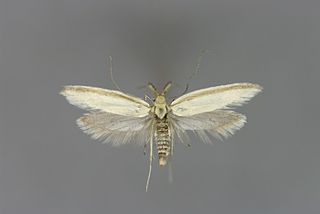
Pleurota pyropella is a moth of the family Oecophoridae. It is found in Portugal, France, Germany, Italy, Austria, Switzerland, the Czech Republic, Slovakia, Albania, Croatia, Slovenia, Bosnia and Herzegovina, Serbia, Hungary, Bulgaria, Romania, North Macedonia, Greece, Turkey, Ukraine, Russia, as well as on Corsica, Sicily, Cyprus and Crete. Outside of the Europe, the range extends to the eastern Palearctic. The species is also present in the Near East and North Africa.
Erigonoplus is a genus of dwarf spiders that was first described by Eugène Louis Simon in 1884.
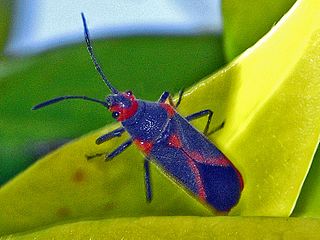
Caenocoris nerii, common name oleander seedbug, is a species of ground bugs in the insect family Lygaeidae.
Malva cretica is a species of flowering plant in the family Malvaceae, native to Tunisia, Sardinia, Corsica, Sicily, Italy, Albania, Greece, the eastern Aegean Islands, Crete, Cyprus, and Turkey, and introduced to France. There may be a subspecies, Malva cretica subsp. althaeoides, present in Spain.
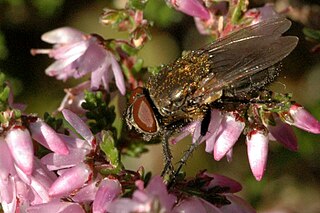
Pollenia amentaria is a species of cluster fly in the family Polleniidae.

Anthrenus pimpinellae complex is a group of closely related species from subgenus Anthrenus. Most species that currently belong to the group were previously assigned as subspecies of Anthrenus pimpinellae.


